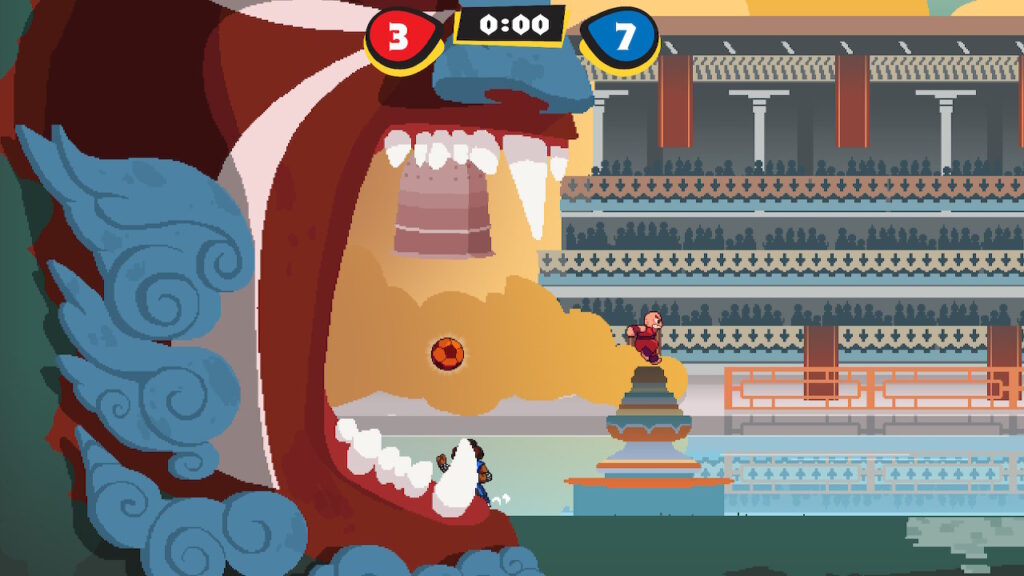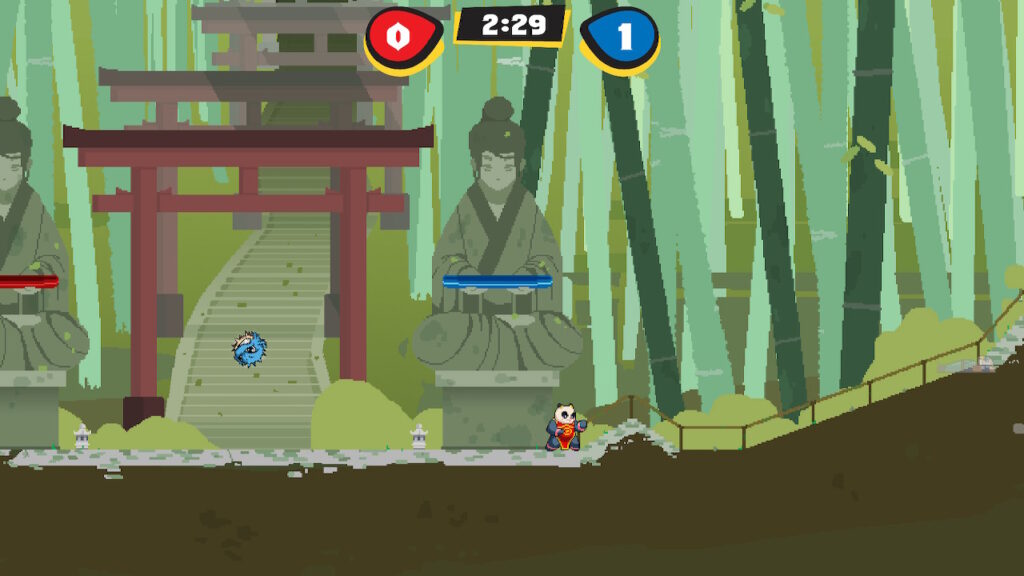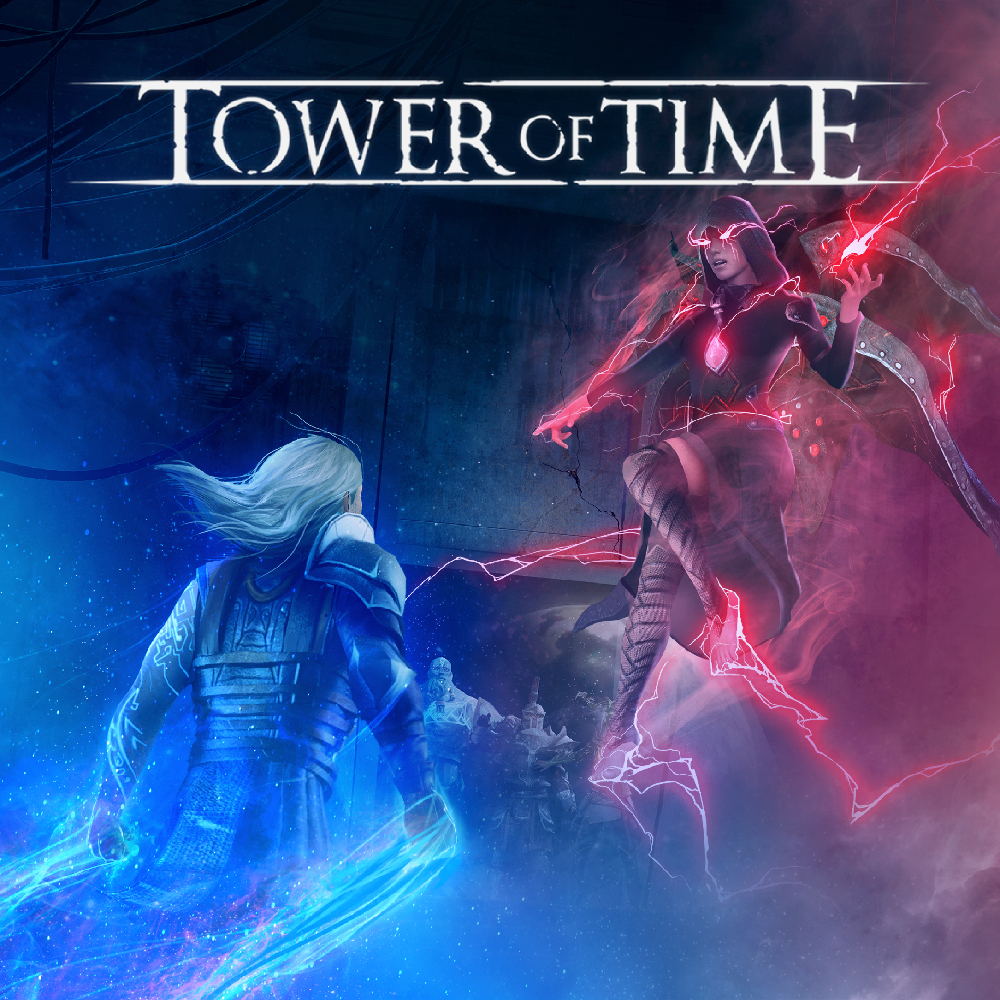KungFu Kickball Review
Fast Facts
KungFu Kickball
Developer: WhaleFood Games
Publisher: Blowfish Studios
Website: https://www.kungfukickball.com/
Genre(s): Sports, Arcade, Fighting, Action
Platform: Nintendo Switch (also available on Xbox, PlayStation and PC – Steam)
Age Rating: PEGI 7
Release Date: 10/02/2022
Price: £12.99
A code was provided for review purposes
Kicking Off
KungFu Kickball is a sports party game that combines martial arts with kickball. I faced off against a variety of foes in multiple locales, proving my worth each time. Does this title stand out from the many other party titles on the Nintendo Switch? Find out in this Rapid Review.
The first thing that stood out to me about KungFu Kickball was how little the game resembled kickball. Instead, it closely resembled soccer. Each field has two balls, one for each player. If a player guides the ball into the opposing goal, they score a point. This simple premise is excellent for a multiplayer game, as the core concept is simple, and there is a lot of room for growth. A few Ubisoft games have implemented Kung Foot into their larger titles as a minigame. I noticed the similarities and was excited to see how KungFu Kickball, a game solely devoted to game mode innovated on the basic concept.

Black Belt in Kick Ball
I began my adventure in the tutorial, where I learned the basic controls. Everything made sense, and the controls were easy to learn. KungFu Kickball featured a dashing move, a jump, and various attacks to damage the ball and my foes. These options helped me both defend my goal and attack the opposing one. Plus, they are fun to master, though perfecting them takes dedication. The character movement and attacks were also easy to understand for newcomers and push talented players to master the mechanics.
The attacks were especially basic. There were directional attacks that could be used both grounded and while midair which were traditional punches and kicks. Though these were to be expected considering the kung fu influence, they felt underwhelming, especially considering these were used constantly. Since most of the attacks were the same from character to character, there was often little variation in each game, which made the game stagnate very quickly. However, there was one move that altered between the characters. Each character had one special move. These were an excellent addition, but even these special moves barely added much. Most of them functioned in one of two categories: turning my player into a projectile or expelling energy around my character. It worked fine but considering this is the only recognizable thing that differentiates characters from each other, I was disappointed.

Staged
Not only were the characters lacking in variety, but there were only six stages. The designs were innovative, but it was a shame for such a limited stage count in such a basic game. It made me less inclined to revisit the title, as after playing on each of the six stages, there was little left to explore. Still, the different stages were quite enjoyable to explore. Every single one had minor alterations to make the gameplay unique. Though there were minor changes, like slopes and additional platforms, combined with the lack of innovative move sets, the minor variations in stages and small stage count made the game less interesting to continue playing.
Moreover, while the layouts of each level varied, many of the levels were similar in size and scope. While not every stage had the same length, the goals were typically far apart. This made sense, and the attacks were powerful enough to bridge the distance between the two sides of the court. Still, including a close-quarters arena would make each engagement even more impactful and make selecting the stage alter the strategy of the game. Though there were no close-range fights, the stages are fun, as the developers closely crafted their game based on the distance between those goals.
Play Again and Again
One of my least favourite elements of this game was a tripping mechanic. If a character took enough damage, they would fall on the ground for a brief period. Though this rewards aggressive gameplay, it felt extremely punishing, as it is not incredibly challenging to chain attacks and keep someone stunned for a while. This mechanic makes for some frustrating moments where I felt helpless. I would have liked to see a parry or a way to punish the aggressor in addition to simply evading the attack. Of course, I could enact this tripping mechanic to my opponents, but I still thought it provided too much reward with very little counterplay. Plus, focusing on attacking my opponent was not as fun as attacking my opponent’s goal even though it helped me in the long run.

Though many of the things featured in KungFu Kickball were serviceable, nothing about the game stood out to me. I enjoyed the minute-to-minute gameplay, but other games like Lethal League Blaze and Bamerang feature more engaging and intense action. The maps were well-designed, but there were only six and they are not vastly different. The characters were aesthetically pleasing, but again, they did not wildly swing the gameplay. KungFu Kickball features a lot of good elements, but the game does not excel in many of them. At the price point, there was a lot that I still desired.
Fighting Those Who Matter
Though there were many areas where KungFu Kickball could have been improved, one of the best elements was the various difficulties in computer artificial intelligence. In addition to fighting people via online multiplayer and local cooperative modes, I could fight three different levels of computers. The easiest computer helped get me familiar with the gameplay, the intermediate level started forcing me to truly learn the mechanics, and the master difficulty truly tested my abilities. I enjoyed having such distinct levels of difficulty, as I could select the one that fit my current desires. The difficulty options and ability to fight my friends always made the game accessible.

In addition, there was an arcade mode that saw me fighting through waves of artificial enemies. It simply faced me up against a few opponents consecutively. It was not disappointing, as I did not expect a substantial story going into this title, but it was nothing exciting either. There is single-player content in the form of artificial intelligence, but there is not a fulfilling story or substantial objectives.
Round (House) Out the Experience
The visuals were also lovely. Each stage is distinct, the characters are recognizable and visually appealing, and the ball is always noticeable. I was also impressed that the camera worked incredibly well. Even when characters were on opposing sides of the screen, it was easy to see all that was going on. There were some moments in the scaling where characters could get lost in the out-of-bounds area, but this only happens when characters are avoiding each other. I thought the visual style worked very nicely and I was thoroughly impressed.

The sound design was also spot-on. I was constantly impressed with how energizing the music was. It was upbeat, loud, and always fit the theme of the game. I thought it also worked well to compliment the gameplay of KungFu Kickball.
Overall, I was disappointed by KungFu Kickball. I thought that a game solely focused on a kung fu infused soccer game would have a more distinct personality. There are a decent number of concepts that the game has to offer, but unfortunately, none of them excelled. In my opinion, at the price point, there are many better options. Though the game is fun, and I will likely revisit it a couple of times in the future, it fails to consistently draw me back in.
Rapid Reviews Rating

3 out of 5
3
You can purchase KungFu Kickball on the Nintendo Switch here

You can find and read our reviews on OpenCritic.





